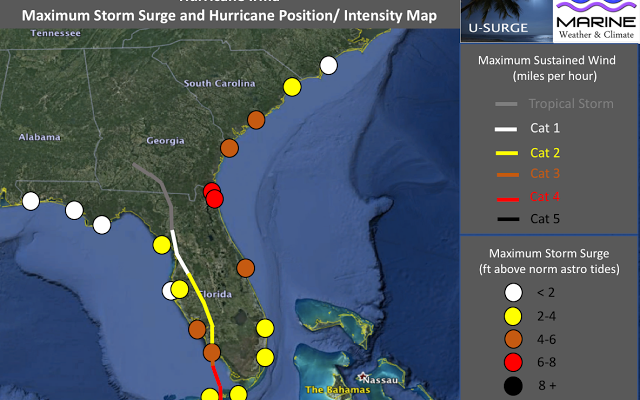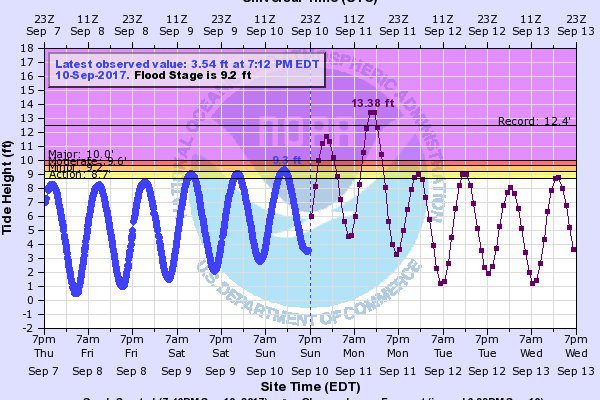Coastal
-

If you live along the coast, you will be interested in this assessment of storm surge conditions around the Southeast from Hurricane Irma. Because the storm was so large, storm surge occurred at a much wider scale than is usual for hurricanes. You can read more about it at https://hurricanehalssb.blogspot.com/2017/09/four-surges-in-one-wrap-up-on-irmas.html.
-

One of the reasons we have been so concerned about Hurricane Irma is the very large size of the storm. One clue about this is the storm surge which is expected on the Georgia coast, far from the center of circulation. The projected high water amount from Irma later this week is expected to be…
-

While Irma’s extreme winds have been impressive and have caused catastrophic damage on the islands it has passed over, their effect on the ocean may be even more catastrophic once it gets close to Florida and the East Coast. The combination of low pressures and high wind speeds causes a dome of ocean water to…
-

Hurricane Andrew crossed the Florida peninsula just south of Miami 25 years ago and ripped up mangrove cover along the coastlines with its storm surge and extreme winds. According to a story this week in the Miami Herald, “Michael Ross, a landscape ecologist at Florida International University, has been visiting the same stand of mangroves…
-

Earlier tonight Hurricane Harvey made landfall near Rockport TX (northeast of Corpus Christi) with winds of 130 mph and a central pressure of 938 millibars, which makes it the 6th lowest pressure in a hurricane hitting Texas. It’s hard to believe that only 48 hours ago Harvey was just a tropical depression. Early reports from…
-

NOAA has a new tool in their Climate Resiliency Toolkit which allows you to look at the migration of a variety of sea life over time. It’s called OceanAdapt and you can read about it at https://toolkit.climate.gov/tool/oceanadapt or go directly to the link at https://oceanadapt.rutgers.edu/regional_data/. It includes information for dozens of different species and covers…
-

A New Jersey-sized area of the Gulf of Mexico has been declared a dead one this year, the largest ever observed in the region. This means that the nutrient load in the water is so high that algal blooms which feed on the nutrients have depleted all of the oxygen in the water, making it…